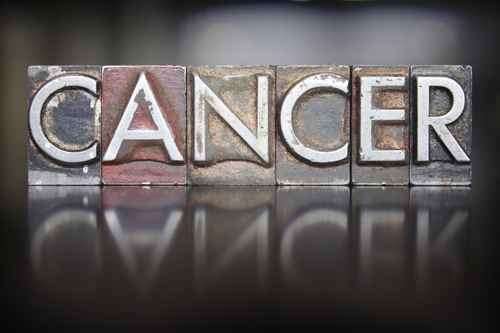The American Cancer Society (ACS) estimated that 4,250 Black Amerian Males developed liver cancer and 2880 died in 20161 . 1,020 Black Women died of liver cancer in 2016 according to the same ACS report.
The liver has many important functions in the body. For example, it cleans toxins from the blood, makes bile that helps digest fat, makes substances that help blood clot, and makes stores, and releases sugar for energy2 .
Primary liver cancer is cancer that starts in the liver. The most common type of primary liver cancer is hepatocellular carcinoma3 , which occurs in the tissue of the liver. When cancer starts in other parts of the body and spreads to the liver, it is called liver metastasis.
Liver cancer is rare in children and teenagers, but there are two types of liver cancer that can form in children. Hepatoblastoma occurs in younger children, and hepatocellular carcinoma occurs in older children and teenagers.
The bile ducts are tubes that carry bile from the liver and gallbladder and the intestine. Bile duct cancer is also called cholangiocarcinoma4 . When it begins in the bile ducts inside the liver, it is called intrahepatic cholangiocarcinoma. When it begins in the bile ducts outside the liver, it is called extrahepatic cholangiocarcinoma. Extrahepatic cholangiocarcinoma is much more widespread than intrahepatic cholangiocarcinoma.
Estimated new cases and deaths from liver and intrahepatic bile duct cancer in the United States in 20175 .
- .New cases: 40,710.
- Deaths: 28,920.
Adult primary liver cancer is a disease in which malignant (cancer) cells form in the tissues of the liver
The liver is one of the largest organs in the body. It has four lobes and fills the upper right side of the abdomen inside the rib cage. Three of the many important functions of the liver are:
- To filter harmful substances from the blood so they can be passed from the body in stools and urine.
- To make bile to help digest fat that comes from food.
- To store glycogen (sugar), which the body uses for energy.
There are two types of adult primary liver cancer.
The two types of adult primary liver cancer are:
- Hepatocellular carcinoma.
- Cholangiocarcinoma (bile duct cancer). (See the PDQ summary on Bile Duct Cancer Treatment6 for more information.)
The most common type of adult primary liver cancer is hepatocellular carcinoma. This type of liver cancer is the third leading cause of cancer-related deaths worldwide.
This summary is about the treatment of primary liver cancer (cancer that begins in the liver). Treatment of cancer that begins in other parts of the body and spreads to the liver is not covered in this summary.
Primary liver cancer can occur in both adults and children. However, treatment for children is different than treatment for adults. (See the PDQ summary on Childhood Liver Cancer Treatment for more information7 .)
Having hepatitis or cirrhosis can affect the risk of adult primary liver cancer
Anything that increases your chance of getting a disease is called a risk factor. Having a risk factor does not mean that you will get cancer; not having risk factors doesn’t mean that you will not get cancer. Talk with your doctor if you think you may be at risk.
The following are risk factors for adult primary liver cancer:
- Having hepatitis B8 or hepatitis C9 . Having both hepatitis B and hepatitis C increases the risk even more.

- Having cirrhosis, which can be caused by:
- hepatitis (especially hepatitis C); or
- drinking large amounts of alcohol for many years or being an alcoholic.
- Having metabolic syndrome10 , a set of conditions that occur together, including extra fat around the abdomen, high blood sugar, high blood pressure, elevated levels of triglycerides and low levels of high-density lipoproteins in the blood.
- Having a liver injury that is long-lasting, especially if it leads to cirrhosis.
- Having hemochromatosis, a condition in which the body takes up and stores more iron than it needs. The extra iron is stored in the liver, heart, and pancreas
- Eating foods tainted with aflatoxin (poison from a fungus that can grow on foods, such as grains and nuts, that have not been stored properly).
Signs and symptoms of adult primary liver cancer include a lump or pain on the right side.
These and other signs and symptoms may be caused by adult primary liver cancer or by other conditions. Check with your doctor if you have any of the following:
- A hard lump on the right side just below the rib cage.

- Discomfort in the upper abdomen on the right side.
- A swollen abdomen.
- Pain near the right shoulder blade or in the back.
- Jaundice (yellowing of the skin and whites of the eyes).
- Easy bruising or bleeding.
- Unusual tiredness or weakness.
- Nausea and vomiting.
- Loss of appetite or feelings of fullness after eating a small meal.
- Weight loss for no known reason.
- Pale, chalky bowel movements and dark urine.
- Fever.
Certain factors affect prognosis (chance of recovery) and treatment options.
The prognosis (chance of recovery) and treatment options depend on the following:
- The stage of the cancer (the size of the tumor, whether it affects part or all of the liver, or has spread to other places in the body).
- How well the liver is working.
- The patient’s general health, including whether there is cirrhosis of the liver.
Liver Cancer is a complex disease. Coping with the disease takes an emotional, financial and physical toll. The National Cancer Institute11 is the world’s leading authority on Cancer. This is a great starting point for cancer information.
Enjoyed this post? Share it and read more here. Jay Harold has put together a Resource page that you may find useful when trying to improve your health and wealth. Please take this advice of Muhammad Ali and give back to others. “Service to others is the rent you pay for your room here on earth.”
Bibliography
- https://www.cancer.org/content/dam/cancer-org/research/cancer-facts-and-statistics/cancer-facts-and-figures-for-african-americans/cancer-facts-and-figures-for-african-americans-2016-2018.pdf (Page 6)
- https://www.cancer.gov/types/liver/hp/adult-liver-treatment-pdq
- https://medlineplus.gov/ency/article/000280.htm
- https://medlineplus.gov/bileductcancer.html
- https://www.cancer.gov/types/liver/patient/adult-liver-treatment-pdq
- https://www.cancer.gov/types/liver/patient/bile-duct-treatment-pdq
- https://www.cancer.gov/types/liver/patient/child-liver-treatment-pdq
- https://www.cancer.gov/Common/PopUps/popDefinition.aspx?id=46146&version=patient&language=English&dictionary=Cancer.gov
- https://www.cancer.gov/Common/PopUps/popDefinition.aspx?id=44139&version=patient&language=English&dictionary=Cancer.gov
- https://www.cancer.gov/Common/PopUps/popDefinition.aspx?id=643126&version=patient&language=English&dictionary=Cancer.gov
- https://www.cancer.gov/




